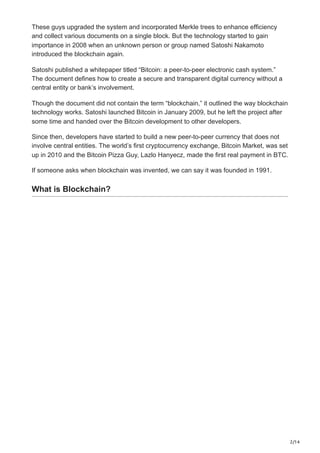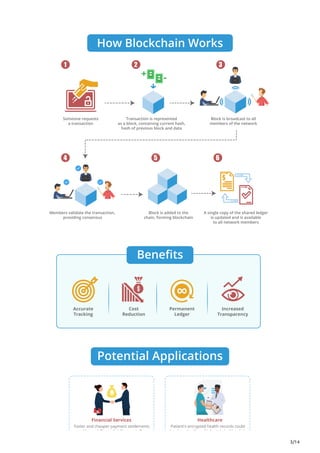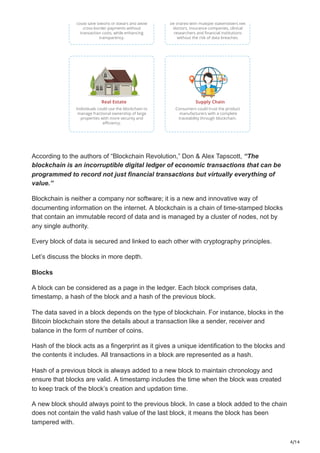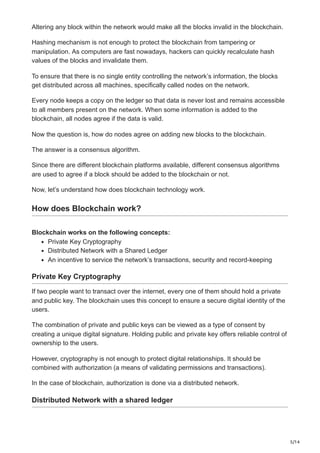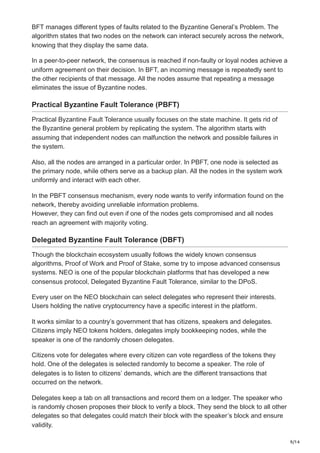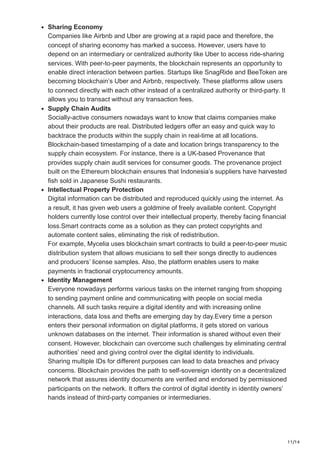This document provides an overview of blockchain technology and its history. It discusses how blockchain emerged from concepts developed in the early 1990s, and how Bitcoin launched in 2009 helped popularize the use of blockchain. The document then defines blockchain as a distributed ledger of transactions shared across a network of computers, and explains how blockchain works using private/public key cryptography and a distributed network to validate transactions. It also covers different types of consensus protocols like proof-of-work, proof-of-stake, and Byzantine fault tolerance. Finally, it discusses applications of blockchain like smart contracts and supply chain audits.

